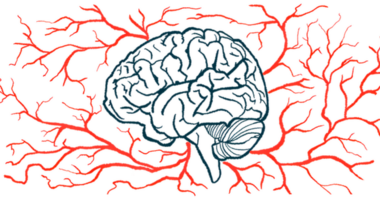Parkinson’s Monkey Model May Help Scientists Explore Non-Motor Symptoms, Study Reports

A well-known monkey model for Parkinson’s disease — used mainly for its ability to mimic human motor symptoms — can also reflect the disease’s non-motor symptoms, including sleep disturbances, changes in the body’s natural clock, and cognitive impairment, a study shows.
These results highlight the usefulness of this model to explore other, lesser known aspects of Parkinson’s disease.
The study, “Charting the onset of Parkinson-like motor and non-motor symptoms in nonhuman primate model of Parkinson’s disease” was published in the journal Plos One.
Animals are at the cornerstone of human disease research, including Parkinson’s, where reliable animal models that can imitate disease features are used to understand disease mechanisms and develop therapies.
Common models used in research include simpler, multicellular organisms — a worm known as Caenorhabditis elegans, the fruit fly and zebra fish. For therapeutic design, more complex organisms are used, such as mice and even nonhuman primates.
The most common Parkinson’s monkey model was developed using small, New World monkeys called marmosets and injecting them with a toxin called 1-methyl-4-phenyl-1,2,3,6-tetrahydropyridine, or MPTP.
“Most of the early studies in Parkinson’s have been conducted with rodents, but there are some complex aspects of this disease you simply cannot investigate using rodents in a way that is relevant to human patients,” Marcel Daadi, PhD, the study’s lead author and leader of the Regenerative Medicine and Aging Unit at the Southwest National Primate Research Center in Texas, said in a press release.
“Nonhuman primates are critical in [this] aspect because we can see these symptoms clearly whether it is the dyskinesia (abnormality or impairment of voluntary movements), or the sleep disturbances that you can monitor or the fine motors skills,” Daadi said.
The toxin induces the hallmark parkinsonian symptoms in the monkey that characterize human Parkinson’s — tremor, rigidity, bradykinesia (slowness of movement), postural instability, and freezing.
The symptoms arise due to the specific toxin-induced death of dopaminergic neurons — a class of neurons that produce the neurotransmitter dopamine — and whose loss triggers Parkinson’s disease motor disturbances.
Increasing research, however, shows that Parkinson’s is a multisystem disease that affects other nerve cells besides dopaminergic neurons, triggering non-motor symptoms, such as cognitive impairment, sleep disturbances, depression, and sensory impairments. These symptoms, however, are barely used as endpoints in clinical trials for Parkinson’s.
In this study, Texas Biomedical Research Institute researchers wanted to see if the marmoset MPTP model could be used to characterize both motor and non-motor Parkinson’s symptoms. The team tracked marmosets using devices around their necks similar to Fitbits people use to track their activity and sleep.
Prior to MPTP injection, the marmosets were regularly observed and displayed no abnormal behavior. One month after the MPTP injection though, they developed severe Parkinson’s disease-like symptoms, including tremors, bradykinesia, abnormal posture and decreased activity. The marmosets continued to exhibit these symptoms at six months, although with decreased severity.
Researchers then tested the animals’ motor and cognitive impairments before and after the induction of Parkinson’s disease using the object retrieval task with barrier detour — a reward-based behavioral test.
“Briefly, the task requires the test subject to retrieve a reward (marshmallow) fastened to a tray from the open side (bypassing the barrier) of a transparent box,” the researchers said in the study.
Whereas before the injection the animals showed no signs of difficulty in retrieving the reward from the box, after Parkinson’s onset, they showed severe action tremor that led to freezing. The progressive nature of the disease was also shown by their worse performance at six months after disease onset compared with one month.
After six months, the animals also showed significant cognitive impairments.
Parkinson’s progression also affected the marmosets’ activity: They fell asleep during the day while in action, and experienced abnormal, irregular sleep. In accordance with these sleep disturbances, they also showed changes in their circadian rhythm, the natural “body-clock” that regulates functions such as sleep and metabolism.
Treatment with levopoda, the gold standard therapy for Parkinson’s disease, alleviated the motor features of the disease and lessened some of the non-motor dysfunctions.
“This study is a great first step,” Daadi said. “More studies are needed to expand on these non-motor symptoms in marmosets in the longer-term, and perhaps, include other nonhuman primates at the SNPRC like macaques and baboons.”






